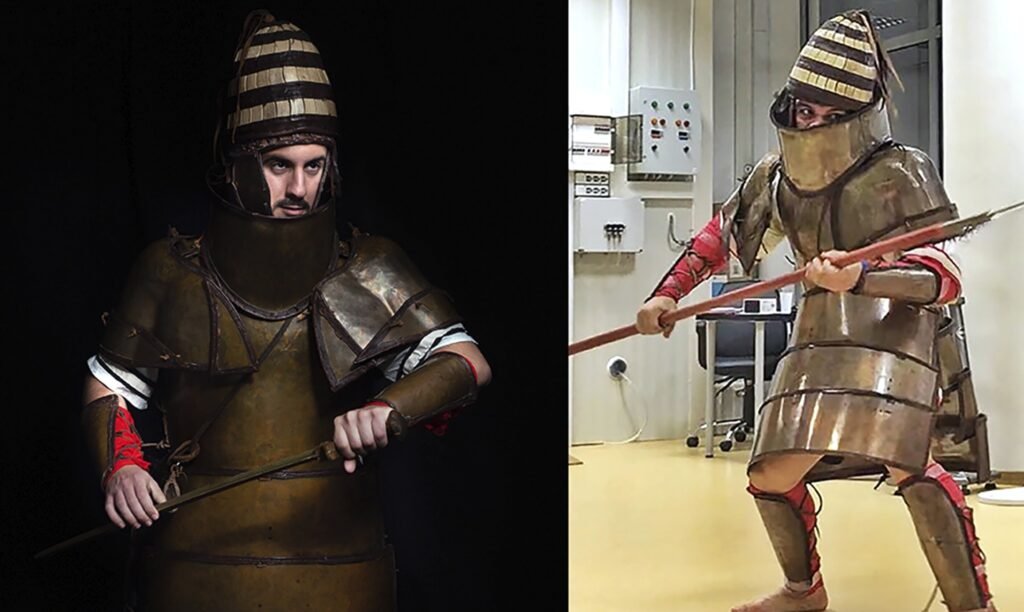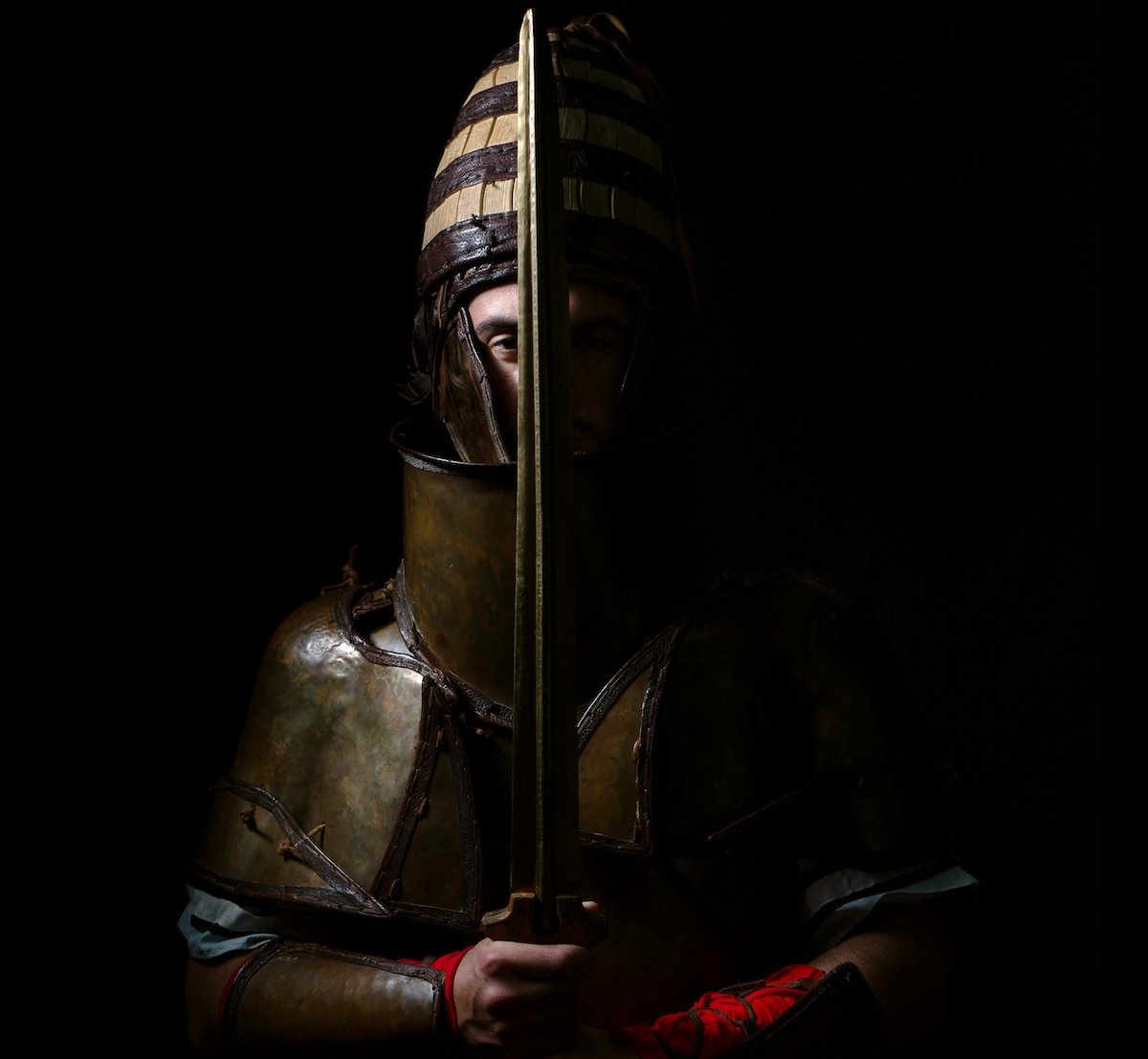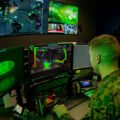Researchers have demonstrated that the Dendra panoply, a 3,500-year-old suit of Mycenaean armor, was not merely ceremonial but fully functional for extended combat.
Published in the open-access journal PLOS ONE, new research led by a Greek research team utilized a series of interdisciplinary studies combining thematic analysis, human experiments, and numerical simulations, providing new insights into the military capabilities of ancient Greek warriors.
Discovered in 1960 near the village of Dendra in Southern Greece, the Dendra panoply is one of the oldest complete suits of European armor. Made of hammered bronze plates, the armor includes a cuirass, shoulder guards, breastplates, and lower protection plates, encasing the wearer from neck to knees. Despite its impressive construction, the armor’s practical use in battle has been a subject of debate among historians and archaeologists for decades.
Led by Andreas Flouris from the University of Thessaly and Ken Wardle from the University of Birmingham, the research team employed a multi-faceted approach to assess the armor’s functionality.


First, researchers conducted two thematic analyses of Homer’s famous work, The Iliad, extracting detailed information on Late Bronze Age warfare, including battle tactics, daily activities, and environmental conditions. This literary analysis was complemented by a thorough review of existing scholarly literature to ensure the findings were aligned with the best available evidence.
Second, thirteen male Marines from the Hellenic Armed Forces participated in an 11-hour simulated combat protocol while wearing a replica of the Dendra armor. The protocol, based on the thematic analyses, included various combat moves, nutrition, and daily routines described in the Iliad. Physiological measurements were taken to assess the strain and effectiveness of the armor.
Lastly, a numerical model, the Late Bronze Age Warrior model, was developed to simulate the thermoregulatory system of a warrior wearing the Dendra armor under different environmental conditions and fighting intensities. This model was validated against the experimental data from the human studies.
The study’s results tell an interesting historical tale. The human experiments revealed that the Marine participants could successfully complete the 11-hour combat simulation without significant physical strain. The physiological measurements indicated moderate-to-high effort levels, minor hyperthermia, and significant energy expenditure but no severe physical strain. The numerical simulations further confirmed that the Dendra armor was compatible with combat use under various conditions.
“It is clear that armor of this type was suitable for use in battle, not just ceremonial,” Flouris said in an interview. “The efficacy and variety of Mycenaean swords and spears has long been recognised. The addition of ‘heavy’ armor will have given elite Mycenaean warriors considerable advantages over those with a shield only for defense or with the lighter ‘scale’ armor in use in the Middle East.”
These findings challenge the long-held belief that the Dendra armor was purely ceremonial. Instead, the study provides strong evidence that the armor was practical for extended combat, suggesting that the Mycenaean civilization’s military success in the Eastern Mediterranean was partly due to their advanced armor technology.
The study’s implications extend beyond historical curiosity, offering valuable lessons for modern defense technology. The interdisciplinary approach combining historical texts, experimental archaeology, and modern physiological and numerical analysis can serve as a model for evaluating the effectiveness of contemporary military equipment.
MJ Banias covers space, security, and technology with The Debrief. You can email him at mj@thedebrief.org or follow him on Twitter @mjbanias.

